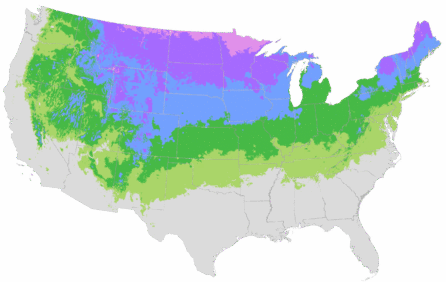You're growing in this Zip Code:
Change LocationDiscover Plants for Your Area
Diabolo® Ninebark
Physocarpus opulifolius 'Monlo'
Retailers Near You
No Retailers found within 100 miles of your zipcode
Be Inspired: How to Use this Plant
| Bloom Time | Summer |
|---|---|
| Deciduous/Evergreen | Deciduous |
| Special Features | Attractive Bark, Dramatic Foliage Color, Easy Care, Waterwise, Benefits Birds |
| Problems/Solutions | Very Wet Areas |
| Growth Rate | Moderate |
| Growth Habit | Upright |
| Flower Attributes | Showy Flowers |
| Patent Act | Asexual reproduction of plants protected by the Plant Patent Act is prohibited during the life of the patent. |
| Landscape Use | Border, Hedge, Privacy Screen |
| Design Ideas | This is a beautiful native shrub that is ideal for the Pacific Northwest and other moist areas prone to acidic soils. Its great fall color and unique winter bark display makes it a good background plant for beds and borders. It's a natural as a single specimen for sunny spots of woodland or wild gardens. Excellent choice for all native and wildlife gardens where seasonal changes and habitat are crucial. A highly colorful and versatile addition to larger landscapes. |
| Flower Color | White |
| Foliage Color | Purple |
| Companion Plants | Fountain Grass (Pennisetum); Spirea (Spiraea); Boxwood (Buxus); Blue Spruce (Picea); Weigela (Weigela) |
| Care Instructions | Thrives in average, slightly acidic, well-drained soils, but very adaptable. Best color in full sun; avoid extreme heat and humidity. Water deeply, regularly during first growing season to establish an extensive root system; once established, reduce frequency. Fertilize in spring. Blooms on old wood; prune after flowering to maintain shape. |
| History | Physocarpus opulifolius 'Monlo' was discovered in June, 1986 in Ellerbek, Kchleswig-Holstein, near Hamburg, Germany by Kordes Gunter and Hans Schadendorf. Among a field of 120,000 other seedlings, this particular plant was noted for its remarkable red foliage in contrast to the large field planting of all typically green foliaged plants. The new plant was reproduced by cuttings at Kordes Jungpflanzen in Germany and subsequently at Monrovia Nursery in Azusa California. Monrovia introduced this cultivated variety as Diabolo® Ninebark (Physocarpus opulifolius 'Monlo') in 1999. The plant was assigned by the breeders to Monrovia Nursery, and U.S. Patent #11,211 was issued on February 8, 2000. |
| Lore | The common name of Ninebark comes from the appearance of the bark which is peels away in layers. Native to North America. The inner bark was brewed into a pain reliever and remedy for many other maladies by Native American tribes within this plant's range. Roots were sometimes steam cooked and eaten and plants were used as charms to cause bad luck. |
| Bloom Time | Summer |
|---|---|
| Deciduous/Evergreen | Deciduous |
| Special Features | Attractive Bark, Dramatic Foliage Color, Easy Care, Waterwise, Benefits Birds |
| Problems/Solutions | Very Wet Areas |
| Growth Rate | Moderate |
| Growth Habit | Upright |
| Flower Attributes | Showy Flowers |
| Patent Act | Asexual reproduction of plants protected by the Plant Patent Act is prohibited during the life of the patent. |
Retailers Near You
No Retailers found within 100 miles of your zipcode
Retailers Near You
No Retailers found within 100 miles of your zipcode
Buy Online
We cannot currently ship this product to your zip code.
About Us
We have been pioneers and craftsmen in the art of growing plants for nearly
100 years. Since our founding in Southern California by Harry E. Rosedale, Sr.
in 1926, we have been absolutely dedicated and obsessed with quality.
We have been pioneers and craftsmen in the art of growing plants for nearly 100 years. Since our founding in Southern California by Harry E. Rosedale, Sr. in 1926, we have been absolutely dedicated and obsessed with quality.







